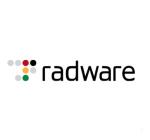What is our primary use case?
Mostly I support my clients in relation to the product.
What is most valuable?
I am very satisfied with the product overall.
There is never a big number of false positives or false negatives. That's the most valuable aspect of the product.
The solution is very easy to use and easy to understand. It's quite an intuitive system.
The user interface and GUI are very good.
I find the product to be very stable. I've supported customers for two years and haven't really had an issue with the solution.
What needs improvement?
I can't say that there are any features missing. I've overall been quite happy with it.
We once had an issue related to trying to publish some exchange application to a file and we experienced some problems there, however, the incident was not really related to BIG-IP. It was likely some kind of infrastructure problem the company was experiencing.
We haven't had any big problems of note.
Technical support could be faster. It's something I'd like to see them work on in the future.
The pricing could be more reasonable.
For how long have I used the solution?
I've been using the solution for about two years at this point.
What do I think about the stability of the solution?
The solution is extremely stable. We haven't had an issue in years. There are no bugs or glitches. It doesn't crash or freeze. The performance is good. It's reliable.
What do I think about the scalability of the solution?
Most of our clients are medium-sized entities.
For the one customer I typically deal with, there has been no need to scale or expand services. The product can be scaled by adding more licenses if necessary. That said, our clients have everything they need and have not actually done this.
There are also add-ons that come from the ASM if a company is interested in that.
How are customer service and technical support?
Technical support is slow and it could be faster. I had one issue once that was not very serious as it was on the Disaster Recovery Site. We were able to pull a previous version from a snapshot. However, the issue was that I was able to solve the problem myself before I even heard back from technical support. If they knew their technology, how is it that I could solve the problem faster as a person that's not as familiar with it? They need to be much faster. It could have been a much bigger problem.
I'd say, overall, we aren't satisfied with the technical support for that reason.
Which solution did I use previously and why did I switch?
I did not previously use a different product. This is my first Application Delivery Consult Solution.
How was the initial setup?
The initial setup is very complex. The basic setup may be fine, however, right now I'm trying to do something in my lab environment. We've tried a few things over the years and it hasn't gotten any easier.
What's my experience with pricing, setup cost, and licensing?
The costs could be lower. In a report, we found that Citrix Solutions are somehow cheaper - including in relation to encryption licensing. I cannot compare as I haven't spoken to Citrix. I don't know if it's easier or has the same (or more features). That said, I wouldn't describe this product as cheap.
Which other solutions did I evaluate?
We're currently comparing F5 to Citrix. I'm not currently working with Citrix; I'm curious to see how they compare to each other. I had a presentation to a client and they just wanted some sort of comparison, which is why I began to look at Citrix.
What other advice do I have?
We are resellers.
I'm a System Integrator. I have experience in virtual environments and with clients. I have some moderate experience with implementation and some bigger experience in supporting this product. I'm not an expert in the field, however, I'm trying to be.
I don't have any issues with the solution. It's pretty problem-free in general. Overall, I would rate it at a nine out of ten.
Which deployment model are you using for this solution?
On-premises
Disclosure: My company has a business relationship with this vendor other than being a customer. reseller


















